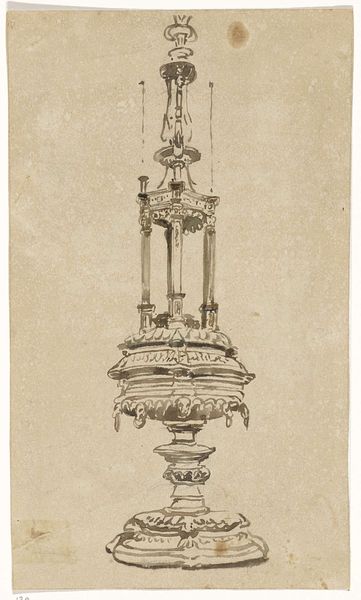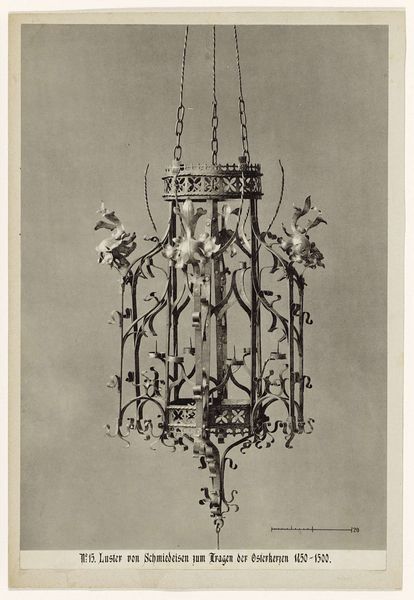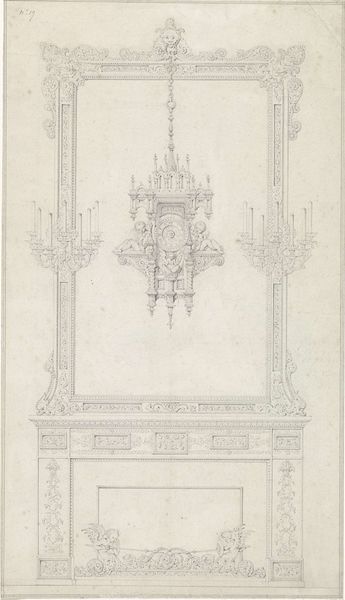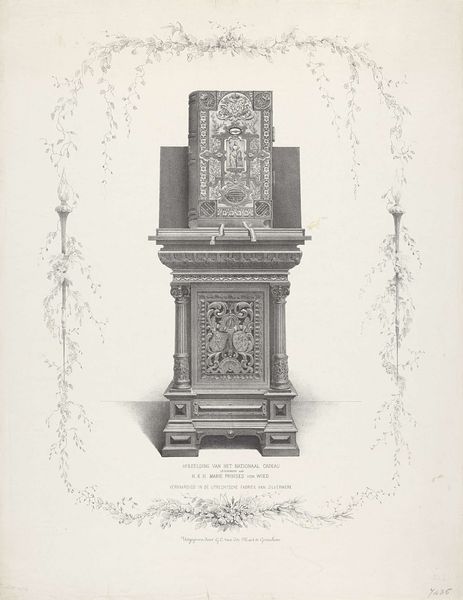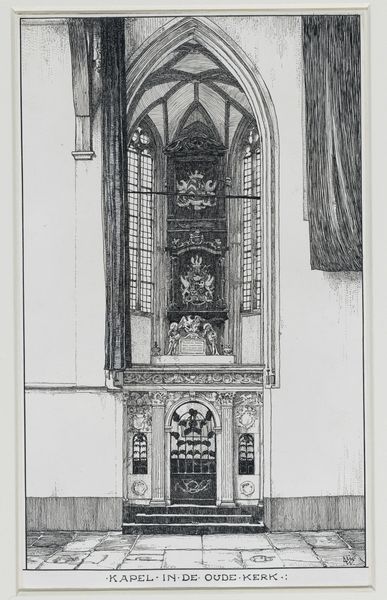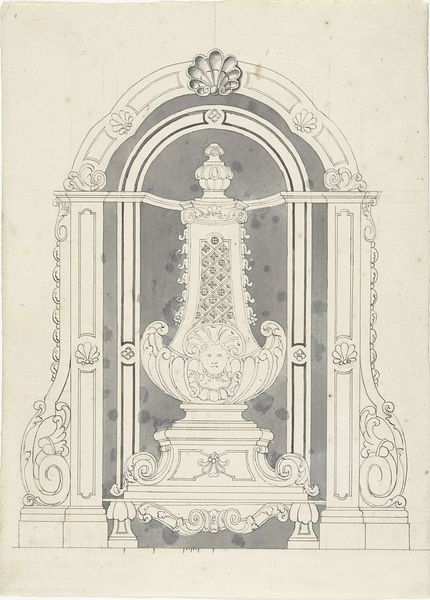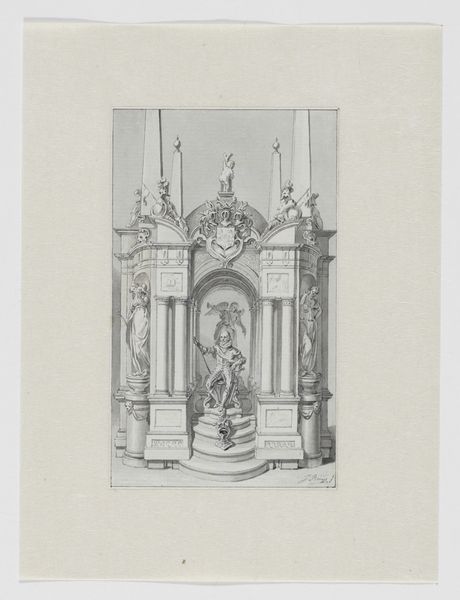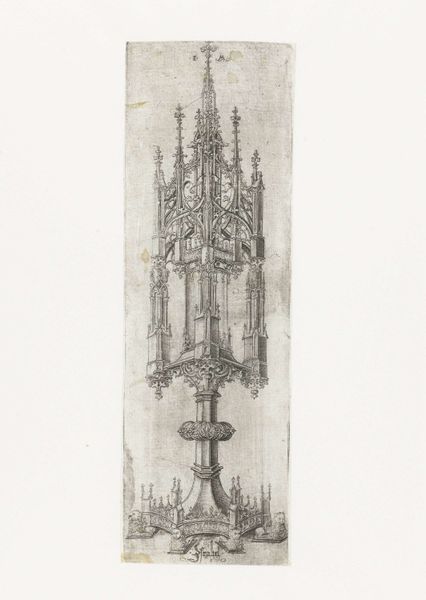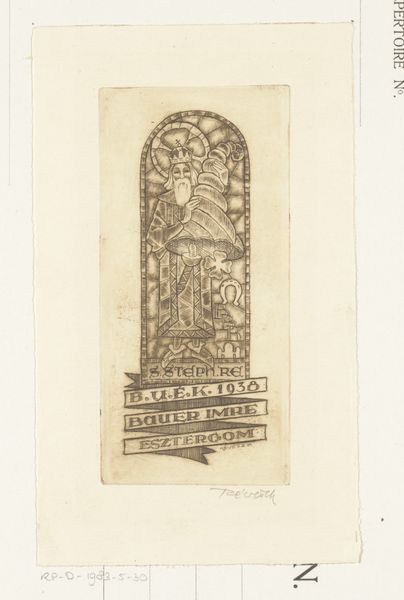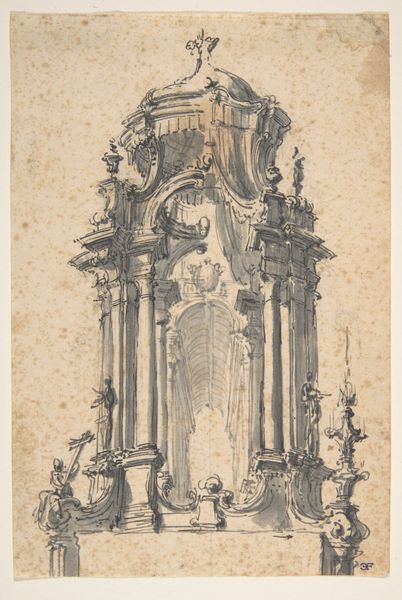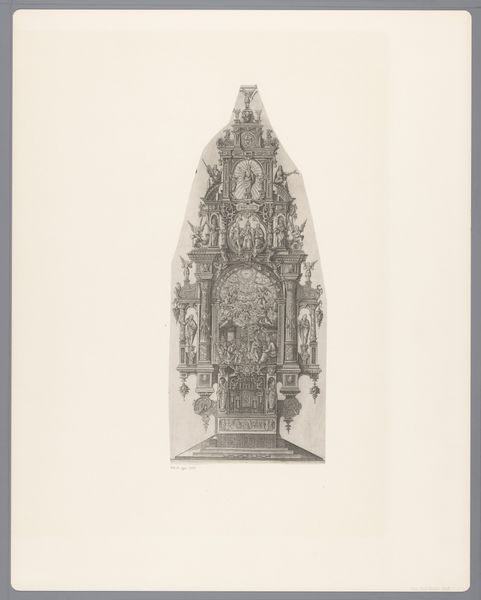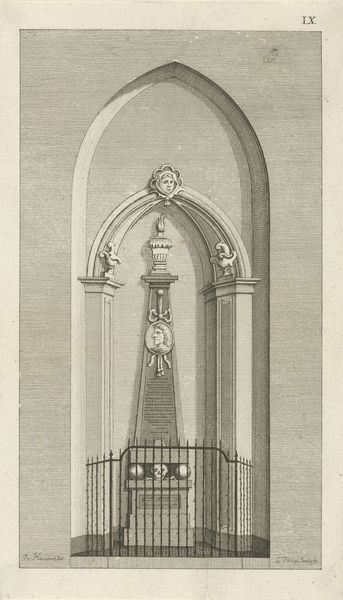
drawing, paper, pencil
#
pencil drawn
#
drawing
#
toned paper
#
medieval
#
pencil sketch
#
gothic
#
paper
#
geometric
#
pencil
Dimensions: height 502 mm, width 130 mm
Copyright: Rijks Museum: Open Domain
Curator: It's fascinating how a simple medium like pencil on paper can convey such grandeur. Wenzel von Olmutz’s "Design for a Gothic Monstrance," dating from 1481-1497, invites us to consider the profound symbolism embedded within religious objects of this period. Editor: Immediately, I see a beacon of aspiration and hierarchy; my eyes are drawn up through these exquisitely drawn vertical lines to what feels like a direct connection with the heavens. There's an emotional uplift. Curator: It's important to note the historical and social context in which von Olmutz created this design. The Gothic period, especially, was deeply entwined with the power and reach of the Church. This monstrance wasn’t just an object; it was a potent symbol of divine authority, designed to inspire awe and reinforce social structures. Editor: Yes, it echoes much of what I find interesting: vessels to display something revered. The monstrance is itself a powerful symbolic container—what beliefs and promises did it communicate to its original viewers? Curator: Think about the identity and experience of those viewing it then; access was regulated, sermons enforced gender and class roles... The monstrance reinforces what Michel Foucault described as "power-knowledge". How can religious artwork serve as a point of resistance in the current political climate? Editor: What you point out underscores the evolving meaning of objects. For me, these spiraling organic shapes towards the base and top speak to something persistent. It echoes motifs that existed long before, like the Tree of Life: earthly and heavenly meeting through these potent images. Curator: A crucial point. Considering the intersectional relationships embedded in the gothic style itself also makes us question monolithic ideas around medieval culture and recognize that a diversity of labor and influences has always been the case. Editor: Thinking about visual legacies allows one to draw fascinating parallels. When considering the cross-cultural impact of similar symbolism, new conversations can blossom. I’m left to wonder how Wenzel's work lives on in these images. Curator: Yes, delving into the political resonance inherent in imagery alongside iconographic explorations offers richer narratives. Editor: Indeed, connecting it to living traditions makes our encounters with older works continuously refreshing.
Comments
rijksmuseum about 2 years ago
⋮
This design served as inspiration and was not meant to be literally reproduced. The base and trunk of intertwined branches and leaves, for example, would be very difficult to execute and never form a stable whole. Certain decorative elements recur frequently in art from Wenzel von Olmütz’s time. In addition to the foliate motifs, note the angels here and elsewhere in the gallery.
Join the conversation
Join millions of artists and users on Artera today and experience the ultimate creative platform.
